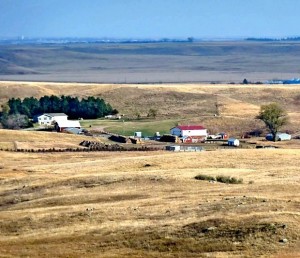South Dakota rancher lets the land point the way
By Steve Kline
TRCP Director of Government Relations.
I remember the first time I met Lyle Perman.
I had been worried about recognizing him, but the worry was misplaced. His bolo tie and cowboy hat set him a world apart from the buttoned-up navy suits of downtown Washington, D.C. This was his first trip to the nation’s capital since he had visited the city with the College Republicans decades earlier. Now, the TRCP hosted his return as part of an effort to educate his South Dakota congressional delegation on the importance of conserving native prairie.
As a lobbyist, I can attest that most Hill meetings run about the same way, with little variation. But when you fly somebody like Lyle to Washington to meet with senators and representatives that he knows personally, the meetings take on an entirely different tone. First, the senator has to catch up on all the latest gossip from home, including a serious dissertation on the weather. In South Dakota, rain is still considered a blessing. Talk then turns to neighbors and church; only after a full debrief can the conversation focus on the comparatively mundane: Farm Bill conservation programs working to keep South Dakota’s essential grasslands intact.
Lyle understands that he must learn from his forebears, question the assumptions of conventional wisdom and heed the ample advice the land offers. His Rock Hills Ranch is among the last vestiges of a great American ocean of grass. Much of that epic landscape has been replaced by row crops, bit by the plow, the grass long ago turned upside down. Lyle has seen firsthand what that means for the long-term health of the place he loves, the place where he raised his family. A lifetime spent in the prairies has convinced him grass is what God intended to be here.
After showing Lyle Washington, D.C., I was thrilled just a few months later that he could show me Lowry, South Dakota, and the place he calls home. Two worlds connected by a Farm Bill and a friendship. I am thrilled that my friend Lyle and his family ranch have received this award, where two new generations (and two sets of twins!) roam the countryside and plan for the future of their grass.
The 2014 Leopold Conservation Award could not go to a more deserving recipient. A tip of the cowboy hat from all of us here at the TRCP.
TRCP Director of Government Relations Steve Kline reflects on his relationship with 2014 Leopold Conservation Award winner Lyle Perman of South Dakota. Read more about Lyle and the award here.

